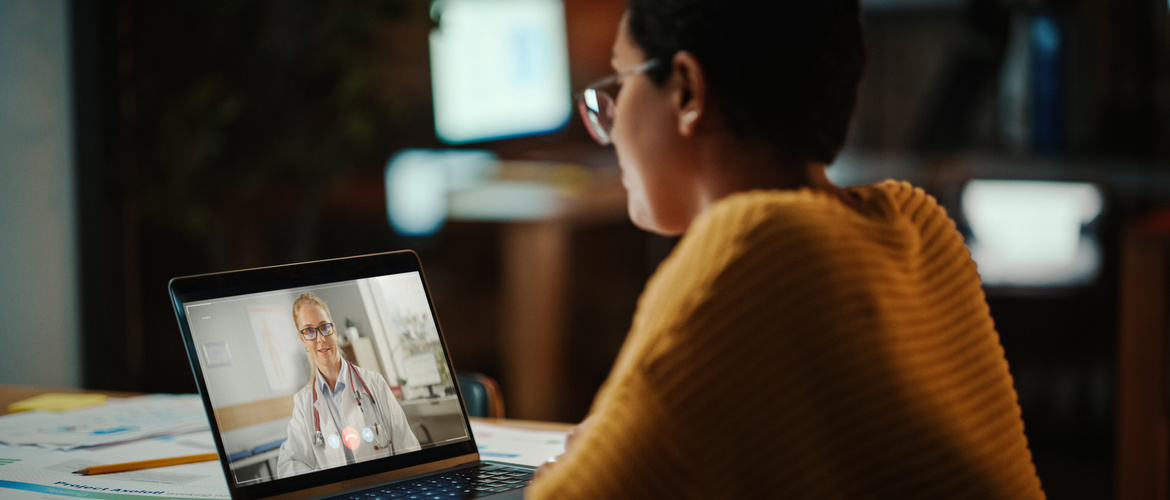
Choose a channel
Check out the different Progress in Mind content channels.

Progress in Mind

Telehealth has been an important part of healthcare since the invention of the telephone, initially replicating what was done in-person before. This has evolved towards improved care, through enhanced models with blending of different technologies. Current and future developments were presented in this APA Online 2022 session, including the concept of the ‘digital clinic’.
Influence of culture on healthcare
Healthcare aligns with the culture it finds itself in, said Dr Jay Shore (CMO, AccessCare Services), introducing three important trends which continue to impact on healthcare: industrialization, exponential rise of the microchip, and digital natives versus digital immigrants. Digital natives learn quickly with information presented in a random fashion, prefer graphics and visuals, and are comfortable with multitasking.1 They are an increasing consumer pressure in healthcare and their preferences in accessing information and interacting with others is becoming more pertinent.
Three important trends which continue to impact on healthcare: industrialization, exponential rise of the microchip, and digital natives versus digital immigrants
Development of telehealth
Innovations in telehealth have been accelerated by the COVID-19 pandemic. Taking healthcare into the virtual space includes videoconferencing, email, and text messaging.2 This can be convenient, advantageous to those with anxiety or avoidant behaviour, and allows the clinician to observe the patient in their own environment, although establishing boundaries can be more difficult.
81% of psychiatrists are using telehealth for at least 75% of their caseload
An American Psychiatric Association survey3 revealed that 64% of psychiatrists saw no patients using telehealth prior to the COVID-19 pandemic. As of January 2021, this has changed to 81% using telehealth for at least 75% of their caseload, with high rates of patient satisfaction and decreased no-shows.
Further opportunities include the integration of artificial intelligence, virtual reality, and robotics into healthcare. Dr Shore warned this may exacerbate the digital divide that already exists, with disparities and inequities in technology access and support. A critical area is assessing the impact of technology on patient engagement and the healthcare provider-patient relationship.
Asynchronous telehealth in clinical practice
Telehealth can be harnessed to increase access to healthcare
In view of the global need for investment in mental health, John Torous (Beth Israel Deaconess Medical Center, USA) discussed how telehealth can be harnessed to increase access to healthcare, ensuring quality is maintained and risks are managed. Synchronous telehealth, with patient and healthcare provider using a two-way audiovisual link in real time, will eventually be limited by the number of clinicians and time available. Asynchronous telehealth offers advantages, as medical data is acquired and transmitted to a clinician for review, but typically in separate time frames.
Dr Torous described three models of asynchronous telehealth: self, guided and hybrid, with a combination of these models used to develop a ‘digital clinic’ at his institution. There is still debate in the literature concerning ‘self-help’ applications (apps), particularly regarding the active ingredient.4 Engagement tends to drop off quickly and therefore the second model of ‘guided’ telehealth has been introduced. Non-professional practitioners, including peer-support workers and care navigators, are used as guides/coaches to help patients use digital tools and platforms effectively.5 The ‘hybrid’ model uses apps to augment and extend healthcare, involving mental health and wellness tools and resources for patients to access outside the clinic.6
Combining the approaches allows the clinician to focus on their clinical interaction with the patient
Combining the approaches can benefit the clinician by allowing them to focus on their clinical interaction with the patient, including meaningful discussion around app data that the ‘digital navigator’ has facilitated the patient collecting.6,7 Smartphones have the potential to provide active (e.g. mood), passive (e.g. distance travelled), and other (e.g. GPS) data, and encourage symptom self-report.
Healthcare and social media
Professor John Luo (UC Irvine School of Medicine, USA) concluded by discussing many of the positive uses of social media in healthcare, including peer support and education for both patients and clinicians. Some of the areas of concern are around privacy breaches and boundary issues, and he stressed the importance of setting clear expectations and boundaries for interactions with patients in the digital sphere.
Set clear expectations and boundaries, in social media, for interactions with patients
Our correspondent’s highlights from the symposium are meant as a fair representation of the scientific content presented. The views and opinions expressed on this page do not necessarily reflect those of Lundbeck.